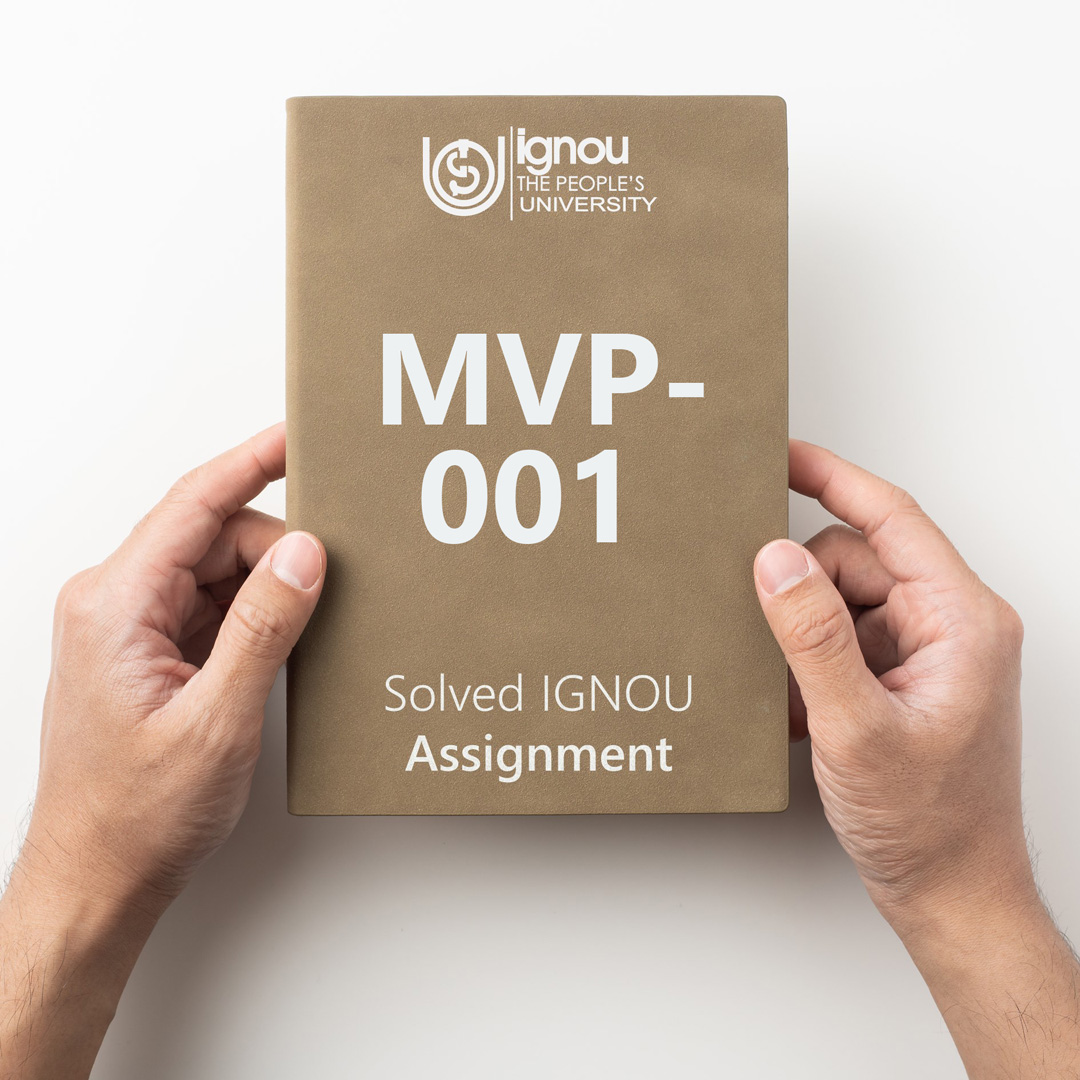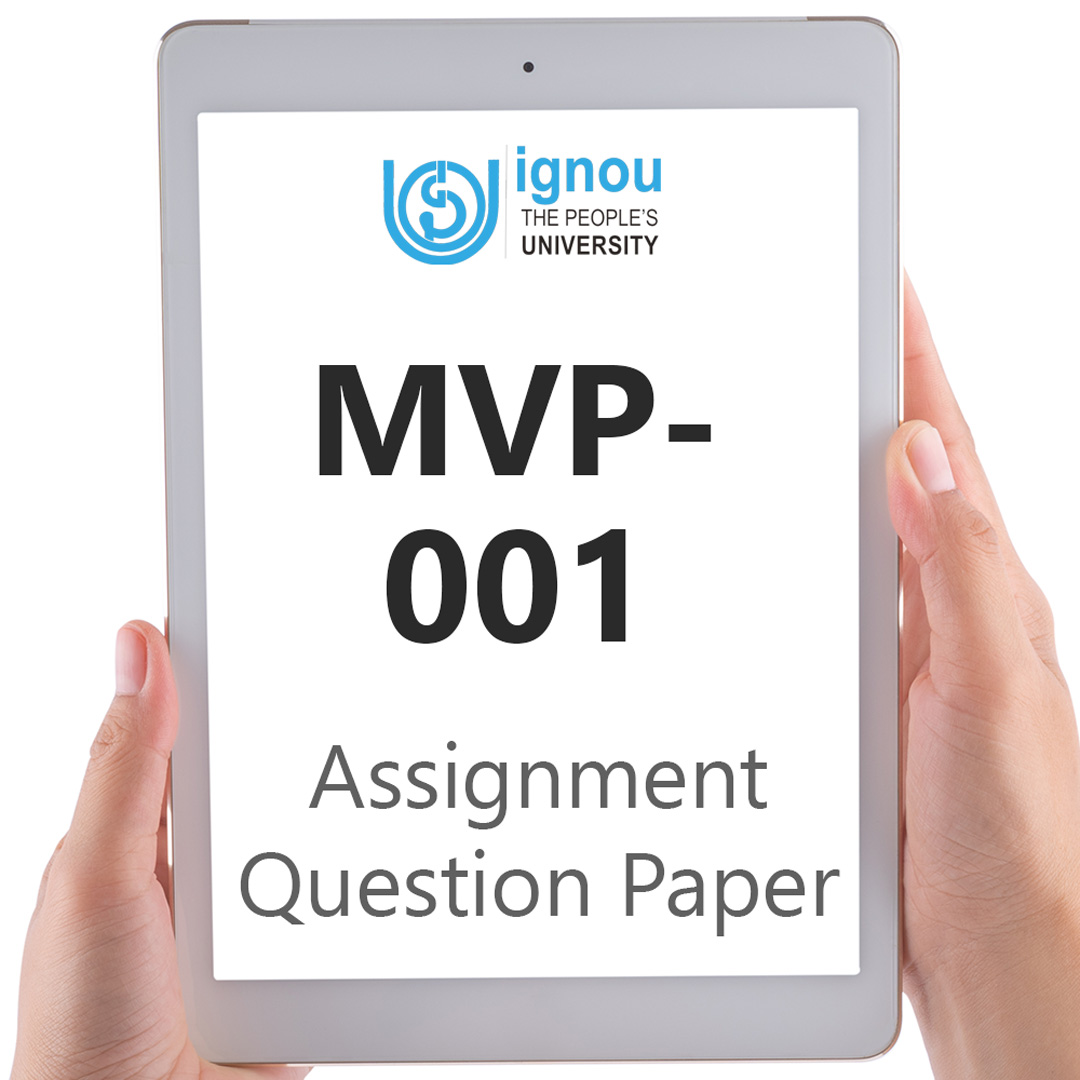If you are looking for MVP-001 IGNOU Solved Assignment solution for the subject Food Fundamentals and Chemistry, you have come to the right place. MVP-001 solution on this page applies to 2023 session students studying in PGDFSQM courses of IGNOU.
MVP-001 Solved Assignment Solution by Gyaniversity
Assignment Code: MVP-001/TMA/2022
Course Code: MVP-001
Assignment Name: Food Safety and Quality Management
Year: 2022
Verification Status: Verified by Professor
Attempt all the questions.
Q1) Describe post-harvest processing of cereals and pasteurization of milk in brief.
Ans) Between harvesting and consumption, cereals undergo several steps that are often called as the total post-harvest system
The first step is getting the harvested grain ready for storage. The grain is separated from the plant by threshing, followed by winnowing which separates the grains from the straw or chaff. The grains are then ready to be dried and stored with some insecticides in containers that is rodent free.
The second step is the primary processing which generally involves the cleaning, sorting and removal of inedible grains. This includes sorting, hulling, milling, pounding, grinding, tempering, parboiling, soaking, and drying.
The third stage is secondary processing that involves cereals to make edible foods by flaking, roasting/puffing, frying, baking, fermenting, and extruding. These food items need less preparation and are in packages for long periods, for example flaked rice, also known as “poha” and puffed rice, generally known as “murmure”.
Lastly, the tertiary processing which utilizes the leftovers like broken grains and flour, which are often used to fed animals and sometimes used industrially to make alcohol, beer, starch, oil, and other things. Also, for coating wax on fruits and vegetables, rice bran wax is utilized.
Pasteurization of Milk: Louis Pasteur, a French microbiologist, invented a method called Pasteurization which involved destruction of only pathogenic microorganism not every microorganism. Pasteurization is the procedure of heating milk to 62.8°C for 30 minutes or 71.7°C for 15 seconds using hot water or steam and then cooling it instantly to 5°C in chilled water. Immediate cooling is important because it inhibits the growth of microorganisms. During pasteurization, enzymes and pathogenic organisms in milk are killed depending on the amount of time and temperature used during the process.
Q2) Explain principle and steps involved in treatment of solid and liquid wastes in a food processing plant.
Ans) The treatment of solid and liquid waste generated from a food processing plant involves several steps to reduce the volume of waste, minimize the negative impact on the environment and recover valuable resources. The principle behind the treatment of solid and liquid waste is to reduce the organic content of the waste and stabilize it to minimize its negative impact on the environment. The waste can then be either disposed of or recycled, depending on its characteristics and the local regulations.
Here are the steps involved in the treatment of solid and liquid waste in a food processing plant:
Collection and Segregation: Collection of waste is the first step in the treatment process. The waste generated from different production processes should be collected separately and segregated based on its physical and chemical characteristics.
Pre-Treatment: The next step involves a pre-treatment process, which includes size reduction, grinding, and shredding of the waste. This step is necessary to increase the surface area of the waste and make it easier to treat.
Anaerobic Digestion: Liquid waste from the food processing plant can be treated through anaerobic digestion, which is a biological process that breaks down organic matter in the absence of oxygen. The process produces biogas, which can be used for energy generation, and a residual sludge that can be used as a fertilizer.
Composting: The organic solid waste generated from the food processing plant can be treated through composting, which is a biological process that decomposes organic matter to produce compost. The compost can be used as a soil amendment and fertilizer.
Landfill: If the waste is not suitable for composting or anaerobic digestion, it may be sent to a landfill for disposal. Landfilling is the process of depositing waste in a designated area and covering it with soil or other material.
Incineration: Incineration is a thermal process that involves burning waste at high temperatures to convert it into ash and gaseous products. This method is often used for the treatment of medical, hazardous, and non-biodegradable waste.
These are the basic steps involved in the treatment of solid and liquid waste generated from a food processing plant. The specific steps and techniques used may vary depending on the nature of the waste and the regulations in place.
Q3) Explain any two properties of lipids. Define immobilized enzyme and give an example of its application in food industry.
Ans) Two properties of lipids are:
Halogenation: The double bond in unsaturated fatty acids in their free or combined state readily accept halogens. This makes the halogen solution in water lose its colour. Halogen is added depending on the double bonds. It can be used to figure out how much of the fat or oil is unsaturated. It is measured by the "iodine number," which is the weight in grams of iodine that 100 gm of fat or oil can take up. The more iodine there is, the more unsaturated fat there is in the fat.
Hydrogenation: When an unsaturated fatty acid is exposed to hydrogen at high pressure and temperature in the presence of Nickel Platinum or a catalyst, the hydrogen gets into the double bonds and converts the acid into a saturated fatty acid. Hydrogenation makes oil that has stability, melting point, and lubricating properties. Sometimes, the process of adding hydrogen to oils is referred to as "hardening of oils." The amount of hydrogenation can be maintained so that fats with the right texture can be made. When fat is hydrogenated, it loses its flavour and gets hot enough to smoke. This makes it good for frying and gives it good shortening power.
Immobilized Enzyme
Enzymes that are used to speed up a reaction in food processing, usually become inactive and cannot be used again. It was tried to separate them from the product and put them to use again. It could be done by attaching the enzyme to a solid insoluble water support. This solid support is called the matrix. This is called enzyme immobilisation. Chemical or physical methods can be used for enzyme immobilization. Enzymes that have been chemically immobilised can't be reused, but enzymes that have been physically immobilised can be used again.
For example, in brewing industry malt is the main ingredient in making beer and other malt drinks like ale and stout. Malt is made by letting barley germinate in damp conditions and then drying it. The amylase in the body breaks down the stored starch into glucose, maltose, and soluble starch, among other things. The grains are then roasted, and water is used to separate the wort, which is the liquid part. This wort is then mixed with yeast and left to ferment to make alcohol. Distillation is used to separate the alcohol so that it can be used to make different kinds of alcoholic drinks.
Q4) Describe in details different methods of food preservation.
Ans) Food preservation is a procedure in which food is treated and handled in a way to inhibit from spoilage and quality loss to prevent food-borne diseases while keeping the food’s taste, texture, and nutritional value.
Different methods of food preservation are given below:
Thermal Processing: This implies controlled use of heat to preserve food by inactivating the enzymes, killing the microorganisms in food. It generally includes blanching, pasteurization, and sterilisation. Pasteurization uses mild heat and refrigeration to extend the shelf life for a short duration, while commercial sterilisation makes products that can stay on the shelf for a long time.
Food Drying/Dehydration: This involves removal of moisture from food to preserve them from the microorganisms which cause food spoilage, as they are unable to grow and multiply without enough water. This process falls into 3 categories: air drying, that involves heat transfer via heated air or surface, vacuum drying, using conduction or radiation and freeze drying, where the water vapour from frozen food is boiled off.
Freezing: Freezing is the most common way to keep food fresh. Freezing doesn’t completely terminate the food spoilage, rather gives temporary longer shelf-life. It stops most of the microbial and physiological processes. When the product is frozen and kept at temperatures below -18°C, it can last for a long duration. Different methods of freezing are- Air freezing, Plate freezing, Liquid immersion freezing and Cryogenic freezing.
Preservatives: Microorganisms and enzymes can be controlled specifically by preservatives. Sugar and salt usually control the water activity. Acids like, sodium nitrite, sulphites, sorbic acid, benzoic acid have antimicrobial properties and acids like dehydro-acetic acid, ascorbic acid are antioxidants. Such preservatives are most used in products like, jams, jellies, preserves, pickles, canned drinks, etc.
Other Techniques: Techniques like irradiation, exposure to ultraviolet light, high-intensity pulsed light, pulsed electric field, high pressure, etc., all work in different ways to stop food from spoilage and have been used to make food last longer on the shelf.
Genetic engineering is another objective of food processing which introduce attributes such as improved colour, flavour, texture, and nutrition. The first transgenic product, for example, was a tomato with less polygalacturonase activity.
Q5) Explain probability and non-probability sampling techniques used for analysis of food samples.
Ans) In probability sampling, every member of the population has a known and non-zero chance of being selected for the sample. This type of sampling method is the most accurate and reliable because it eliminates the possibility of bias in the selection process.
Simple Random Sampling: These needs known number of units in a population and allocate each unit a number. A certain number of random numbers between one and the total number of population units is chosen. Population is then estimated by the units that match the random numbers.
Systematic Sampling: It is used when there isn't a full list of sample units. The first sample is picked at random, and then at every nth unit, samples are picked at random.
Stratified Sampling: This involves population division into subgroups so that each subgroup is as similar as possible. From each subgroup, samples are picked at random.
Cluster Sampling: This divides the population into clusters such that the characteristics of each cluster are similar. Random samples are taken from the clusters, and they can be fully inspected for analysis.
Composite Sampling: It is used to get samples from things that come in bulk. Two or more samples are combined to get one sample for analysis that lowers differences between samples.
In non-probability sampling, the sample is selected based on convenience, judgment, or some other non-random method. This type of sampling method is less reliable than probability sampling because it does not ensure that every member of the population has an equal chance of being selected.
Judgement Sampling: It depends on the person taking the sample. If the sampling is done by an experienced person who knows the limits of extrapolating from the results, this method may give a better estimate of the population.
Convenience Sampling: It is done when easy sampling is the most important thing. The first pallet in a sample is chosen which is easily accessible. This kind of sampling won't be true to the whole population.
Restricted Sampling: This may be unavoidable if not all the population is accessible. For example, if a sample is to be taken from a truck, but the sample doesn't represent the whole population.
Quota Sampling: It is putting a sample into groups that represent different types and then taking samples from each group. This method is cheaper and is also less reliable.






